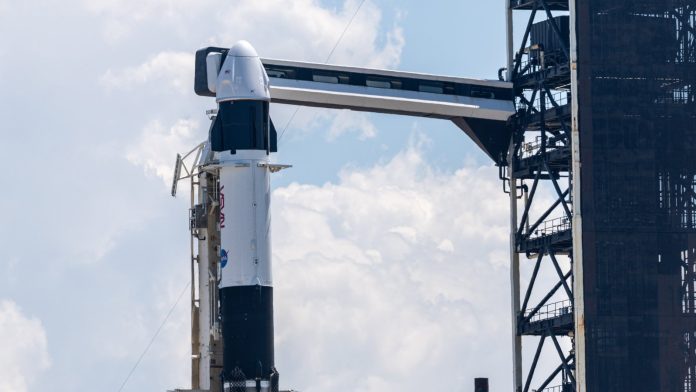
Into the Quiet Night: The Secretive Flight of SpaceX’s X-37B Drone
As dawn approaches over the horizon, eyes across the globe turn skyward, poised for a spectacle that stays shrouded in as much mystery as it does marvel. Tomorrow, a sleek SpaceX Falcon 9 rocket is set to roar into the vast blackness of space, carrying a payload that few truly understand but many secretly watch. This isn’t just another satellite launch—the passengers aboard this journey are the enigmatic X-37B drone, embarking on its eighth classified mission under the watchful gaze of the United States Space Force.
Scheduled for 5:50 a.m. Irish time, with a backup window at the same hour the following day, the launch represents yet another chapter in a story stretching back over a decade. The X-37B, a spacecraft that looks like a miniature version of the now-retired NASA Space Shuttle, is barely nine meters long but looms large in the realm of space innovation and defense intrigue.
The Drone That Defies Explanation
To the casual observer—or even the space enthusiast—the X-37B may just be a curious curiosity, a bus-sized glider with solar panels and elusive goals. Yet, talk to experts and officials, and you’ll unravel an aura of cutting-edge experimentation and geopolitical significance.
An anonymous source within the Space Force shared, “The X-37B is our laboratory in orbit. It’s where we push the envelope on technologies we can’t test here on Earth.” The military Frames its latest voyage as “a wide range of test and experimentation objectives,” emphasizing that these are no ordinary spaceflight theatrics.
At the heart of this mission are technologies that may define the future of space communication and navigation. From laser communications—promising data speeds and security far beyond current radio transmissions—to the highest-performing quantum inertial sensor ever tested beyond Earth’s atmosphere, the X-37B is sounding the drumbeat for a new era in space resilience.
An Orbital Testbed for Next-Gen Technology
“Our goal,” a spokesperson for the U.S. Space Force elaborated last month, “is to improve the resilience, efficiency, and security of space-based communication architectures. In a contested and congested orbital environment, maintaining superiority is non-negotiable.”
The challenge: space is becoming a crowded neighborhood. Over 7,000 satellites orbit our planet today, with thousands more planned, launched, or decommissioned yearly. The X-37B’s ability to demonstrate laser communication technologies means potentially communicating with satellites at faster speeds, with less chance of interception or jamming—a critical edge in the military’s toolkit.
Meanwhile, the spacecraft’s quantum inertial sensor, developed through sophisticated quantum mechanics principles, offers an unprecedented precision in navigation without reliance on GPS—a game-changer if those signals get disrupted in times of conflict or emergency.
From Shuttle Legacy to Unmanned Enigma
Physically, the X-37B is a vestige of NASA’s storied shuttle program—an echo of the glory days when humans flew the skies and stars. Measuring nine meters from nose to tail and boasting a 4.5-meter wingspan, this drone operates largely autonomously, powered by gleaming solar panels that capture the sun’s energy to keep its instruments alive and kicking in the cold vacuum of space.
“It’s essentially a robotic shuttle,” says Dr. Linda Ramirez, a space policy analyst based in Madrid. “What’s fascinating is its reusability—the X-37B lands like a plane and can be prepped for another mission. This isn’t just a probe or a satellite; it’s more like a secret agent, performing clandestine work above our heads.”
Since 2010, when the first mission lifted off, the X-37B has clocked thousands of hours in orbit. Designed by United Launch Alliance and Boeing for the U.S. Air Force—today’s Space Force inheritor—it occasionally carries out select NASA experiments, though much about its exact operations remains classified.
The Quiet Echo of Cold War Ambitions
Peeling back the layers of secrecy, one can’t help but draw parallels to the Cold War era’s cloak-and-dagger space race. Dr. James Okoro, a veteran defense strategist in Abuja, reflects, “Space is the new frontier, not just for exploration but for strategic dominance. The X-37B is a physical manifestation of how modern military priorities have shifted.”
Where once rockets catapulted men and flags, now unmanned vehicles silently circle earth, testing technologies to secure data flow, protect assets, and maintain a watchful eye from above. This mission invites us to consider—are we witnessing the dawning of a new era where advanced tech, not troops, shape power politics?
Local Hopes and Global Eyes
Meanwhile, in the artsy district of Galway, where the mist often climbs off the Atlantic in soft waves, locals are already talking about the event. “It’s magical, really,” says Siobhan O’Reilly, a schoolteacher who plans to bring her students outside early to catch the plume of the Falcon 9 rocket. “It reminds us that even small places like Ireland are connected to the grandest human stories.”
Her student Liam adds with boyish enthusiasm, “Space is the future. When the drone flies up there, it’s like science fiction made real.”
Such sentiment underscores a vital truth: these missions are more than military exercises or experiments. They are spaces where science, security, and imagination entwine—where the dreams of countless generations meet the cold logic of geopolitics.
What the X-37B’s Mission Means for You
As the Falcon 9 readies itself for launch, one must ask: how do these silent, unseen missions affect our daily lives? In an era dominated by data, communications infrastructure is paramount. The innovations tested on the X-37B might one day enhance everything from internet security to disaster response.
Moreover, with the increasing militarization of space, the mission is a stark reminder that the cosmos, once the final sanctuary, is increasingly a contested realm. According to the Union of Concerned Scientists, nearly 30 countries now have some form of space capability, setting the stage for potential conflicts that could impact lives here on Earth.
So, as you read about the X-37B’s climb into the black, consider: what does the future of space mean for humanity? Are we ready to steward this new frontier responsibly—balancing innovation with caution, security with peace?
Watching the Skies: A Moment to Remember
Tomorrow, as the engines ignite and the Falcon 9 breaks the silence of the early morning skies, it will carry not just a drone, but the hopes and fears of a world grappling with rapid change. The X-37B’s journey is an invitation—to gaze upward, wonder deeply, and reflect on the invisible threads connecting us all to the vastness above.
Will you be watching?









